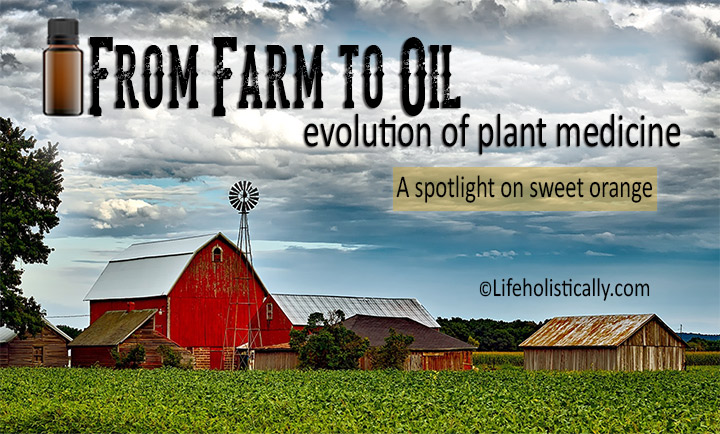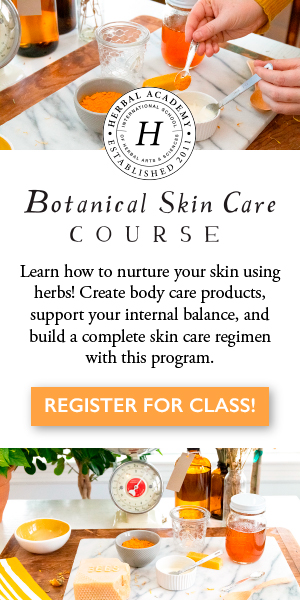The essential oils that we know and love are derived from plants, but this does not necessarily mean that the therapeutic benefits or uses from the plant to essential oil are the same. In many cases, this does not hold true. There are many recipes online utilizing essential oils that do not honor chemistry and do not focus on safe use. Sustainability is also a massive concern as more and more people are stepping into the essential oil community every day. It is not necessary to use oils every day, or in everything. When we see a recipe shared online, we must ask ourselves if it is necessary, shifting the way we currently see these beautiful resources.
My goal in this series of blogs is to celebrate plants in all of their glory. I will walk you through from farm to oil. Uses, limitations, and fun recipes of each botanical will be covered. Within each article, I will discuss the herb, flower, fruit, seed, root, or bark, and finally, the oil. This will be informative and most importantly, FUN!
Today I will be talking about sweet orange citrus sinensis essential oil for its powerful therapeutics in the realm of our emotional wellbeing.
Oranges, juicy, sweet, and so uplifting…. (Citrus sinensis)
The first place our thoughts go to when we talk about oranges may be sunny Florida, but sweet oranges, a member of the rutaceae family are actually native to China. Now, the orange is the most common fruit grown in the world today, in places including the Far East, the Union of South Africa, Australia, throughout the Mediterranean area, and subtropical areas of South America and the Caribbean. When looking at the production of oranges worldwide, the amount of oranges that are grown organically is negligible, therefore we should use caution using this oil internally. The great thing is that there is no real need to.
What should we know about conventionally grown oranges? They are sprayed with a lot of pesticides. Over 140 of them. The good news here, is researchers tell us that the pesticides do not find their way to the fruit that we consume, but we know that the peels are cold-pressed to obtain the essential oil, which a very important factor for those that champion internal usage of essential oils [2]. (I still only buy organic oranges, because I eat them nearly every day) No knowledge is bad knowledge.
The main constituent in an orange that we look to use for our health is limonene. Limonene has many benefits, and there have been many studies involving this constituent that show that it does, in fact, have great promise. Limonene is found in the peel of the citrus fruit. Orange has even more limonene than lemon, around 95% compared to 65%, approximately, and lemon is the most commonly recommended oil to throw back into the delicate mucous membranes of our digestive system, running all the way from our oral cavity to our anus.
Now, before your mind goes down the rabbit hole, as you can easily find misinformation online in regards to orange essential oil, we need to address the method of use from fruit to oil, as that oftentimes is where the message gets lost in translation when it comes to this juicy fresh citrus fruit.
We all want to obtain antioxidants in our diets. Antioxidants devour free radicals. Now, it is important to understand that if we are breathing oxygen, we are creating free radicals, so the reality is important too. So…free radicals…in small quantities, not a huge concern, but in excess they will accelerate aging and can lead to all sorts of negative health problems. And since we are being bombarded from all sides with pollution of some sort, we need our liver performing optimally at all times. Consuming foods rich in antioxidants will go a long way towards your optimal health.
Enter oranges, which are very rich in antioxidants, due to both the limonene content as well as the vitamin C content. Thoroughly washing your organic oranges and placing a slice in your water every day is quite healthy, and a nice alternative from plain water all day long. Use the juice of a ½ an orange in a tall glass of water and you have obtained 25% of your recommended daily allowance (RDA) of vitamin C [3]. This is very similar to lemons. Just remember to take care of the enamel on your teeth. Rinsing with water after your drink is a good precautionary measure.
Using the Fruit
Want a sweet treat without the guilt? This is a perfect treat.
Orange Strawberry Mint Popsicles
Adapted from LiaGriffith
These molds are just perfect, and BPA free
Warm water 1 cup
Cold water 1 cup
Raw honey 1/2 cup
Mint leaves, 5-6 sliced in thin strips
Fresh squeezed orange 1
Strawberries, thinly sliced
Warm one cup of your water on the stove to melt the raw honey. Add to a stainless steel or glass bowl to cool quickly (add a few pieces of mint to the warm water). When cooled, add the rest of the water and orange juice.
Place the strawberry slices and mint evenly in your molds, and pour your liquid mixture in. Freeze.
These are so incredibly delicious, without the unhealthy sugars or food coloring.
I ask that all of you begin to think more about where you can use the nutrient-dense fruit before reaching for the essential oil.
When the essential oil is helpful
We can utilize the essential oil to when under stress or suffering from anxiety. Sweet orange essential oil is my number one recommended essential oil to parents for their children. Try this blend in a diffuser (from my Aromatherapy for Kids book):
Woesbegone (Master Blend)
Mandarin red (Citrus reticulata) 15 drops
Orange sweet (Citrus sinensis) 8 drops
Sandalwood Australian (Santalum spicatum) 6 drops
Frankincense (Boswellia carterii) 4 drops
Vetiver (Vetiveria zizanoides) 2 drops
Place these oils in a 5 or 10ml glass bottle. Now you can use on an aromastick or diffuser per your specific diffuser instructions. You can even apply topically properly diluted as sweet orange essential oil is not phototoxic to the skin.
What Does the Research Say?
- “Two hundred patients between 18-77 years of age (half women, half men) were assigned to one of four independent groups. While waiting for dental procedures patients were either stimulated with ambient odor of orange or ambient odor of lavender. Anxiety, mood, alertness and calmness were assessed while patients waited for dental treatment. Statistical analyses revealed that compared to control condition both ambient odors of orange and lavender reduced anxiety and improved mood in patients waiting for dental treatment” [4].
- “Forty (40) male volunteers were allocated to five different groups for the inhalation of sweet orange essential oil (test aroma: 2.5, 5, or 10 drops), tea tree essential oil (control aroma: 2.5 drops), or water (nonaromatic control: 2.5 drops). Immediately after inhalation, each volunteer was submitted to a model of anxiety, the video-monitored version of the Stroop Color-Word Test (SCWT). Although more studies are needed to find out the clinical relevance of aromatherapy for anxiety disorders, the present results indicate an acute anxiolytic activity of sweet orange aroma, giving some scientific support to its use as a tranquilizer by aromatherapists” [5].
- “We included 72 patients between the ages of 22 and 57 while waiting for dental treatment in our study. The participants were assigned to either a control group (14 men, 23 women) or to an odor group (18 men and 17 women). Ambient odor of orange was diffused in the waiting room through an electrical dispenser in the odor group whereas in the control group no odor was in the air. Specifically, compared to the controls, women who were exposed to orange odor had a lower level of state anxiety, a more positive mood, and a higher level of calmness. Our data support the previous notion of sedative properties of the natural essential oil of orange (Citrus sinensis)” [6].
Essential Oil Misconceptions
There are two really big misconceptions that I want to briefly talk about, and provide resources for further reading.
The first is that we can and should be placing drops of orange (or another citrus) essential oil in our water to drink daily. Some suggest a drop, some much more. Is this really logical?
Essential oils are lipophilic, also called non-polar substances, but they are not actually fats. Water, on the other hand, is polar [7]. When looking at things from a chemistry angle, when you have one non-polar substance and one polar substance, it is like a bad date, they cannot get away from each other quickly enough. They stay separate, trying adamantly not to touch. Unlike the dating scene, opposites do not attract here. The oils will sit on top of the water, no matter how vigorously you mix it, or the temperature of the water. Chemistry is chemistry. Learn more about essential oil chemistry, here.
Many people are drinking their essential oils, and this is very unfortunate, as the risk is not fully understood. Why? Long-term studies are not yet available. The reason is that this is a relatively new recommendation, albeit a very prevalent one, so I feel the evidence will begin to show itself in time.
Essential oils do not belong in a glass of water without an emulsifier, period.
The second misconception and the reason why it is stated to put essential oils in our glass of water is that essential oils contain nutrients, in the case of orange, the claim is often vitamin C.
According to the Oxford Dictionary, a nutrient is “A substance that provides nourishment essential for the maintenance of life and for growth” [8].
The Oxford Dictionary further states that a supplement is “A substance taken to remedy the deficiencies in a person’s diet” [9].
A few key points in regards to this topic are:
-Steam distillation of plant matter occurs at approximately 100 °C/212 °F [10].
-Vitamins degrade at very specific temperatures. Vitamin C, for example, degrades right around 70 °C [11]. Notice that this is 30° cooler than the temperature in which plants are distilled.
-For these reasons, sweet orange essential oil is not providing us with anything that we are missing in our daily diet, therefore is not a supplement.
What about the cold-pressed variety you ask? Because the cold-pressed variety of essential oil is not performed under heat, it is fair to say that some vitamin C could be present in the oil, although evaporation of the volatile nutrient will definitely come into play here are well. It is very important to remember though, the amounts will be insignificant, definitely not anything to write home about. If you are looking to obtain vitamin C as a true supplement, please consider the fruit.
I know that these are bits and pieces of a very important puzzle, therefore, I ask that you please take the time to read my article on essential oils and nutrients, here.
Closing
When we take from the earth for nutrition, sustenance, and healing, it is important that we always consider not only the impact of our use but on giving back. In an ideal world, if we all gave back a little bit more than we take, the impact would be massive.
If you are placing orange essential oil in your water every day, think first and foremost of the possible health implications of this. Always use a critical eye to consider what you were previously told may be flawed. Is further unbiased research warranted? Are using oils every day in this manner supportive of the sustainability of essential oils? Could we utilize the real fruit for a much safer, nutrient-rich alternative? I think the answer to this is a resounding YES!
We need to begin to shift the way we currently see these beautiful resources, for the continued future success of natural healing.
Like so many practices in life, I encourage you to become educated on the proper use of essential oils. When using them, please do so cautiously, understanding that there is often misinformation on the internet. You can be assured that I support only educated and proven resources. While essential oils should not be feared they should be respected and used properly to ensure the safety of the individuals using them.
Please note that I am not a medical practitioner. The content of this website is provided for general informational purposes only and is not intended as, nor should it be considered a substitute for, professional medical advice. Do not use the information on this website for diagnosing or treating any medical or health condition. If you have or suspect you have a medical problem, promptly contact your professional healthcare provider. By using this website, you assume full responsibility and liability for your own actions.
References
[1] “Citrus ×sinensis (L.) Osbeck (pro sp.) (maxima × reticulata) sweet orange”. Plants.USDA.gov. Archived from the original on May 12, 2011.
[2] https://www.independent.co.uk/environment/oranges-are-not-the-safest-fruit-they-all-exceed-pesticide-limits-519954.html
[3] https://healthyeating.sfgate.com/lemons-provide-vitamin-c-like-oranges-do-3508.html
[4] https://www.ncbi.nlm.nih.gov/pubmed/16095639
[5] https://www.ncbi.nlm.nih.gov/pubmed/22849536
[6] https://www.ncbi.nlm.nih.gov/pubmed/11134689
[7] Polar vs Non-Polar Molecules: What you Need to Know. Retrieved from https://blog.udemy.com/polar-vs-non-polar/
[8] Definition of a Nutrient. Retrieved from https://en.oxforddictionaries.com/definition/nutrient
[9] Definition of a Supplement. Retrieved from
https://en.oxforddictionaries.com/definition/supplement
[10] Distilling Aromatic Plants. Retrieved from https://aromaticstudies.com/distilling-aromatic-plants/
[11] Rahmawati, S., Bundjali, B. Kinetics of the Oxidation of Vitamin C.
Retrieved from http://www.researchgate.net/publication/228484005_KINETICS_OF_THE_OXIDATION_OF_VITAMIN_C
Resources
Sustainability Issues https://naha.org/explore-aromatherapy/sustainability-issues/
The Environmental Impact of Essential Oils http://www.earthisland.org/journal/index.php/elist/eListRead/the_environmental_impact_of_essential_oils/




